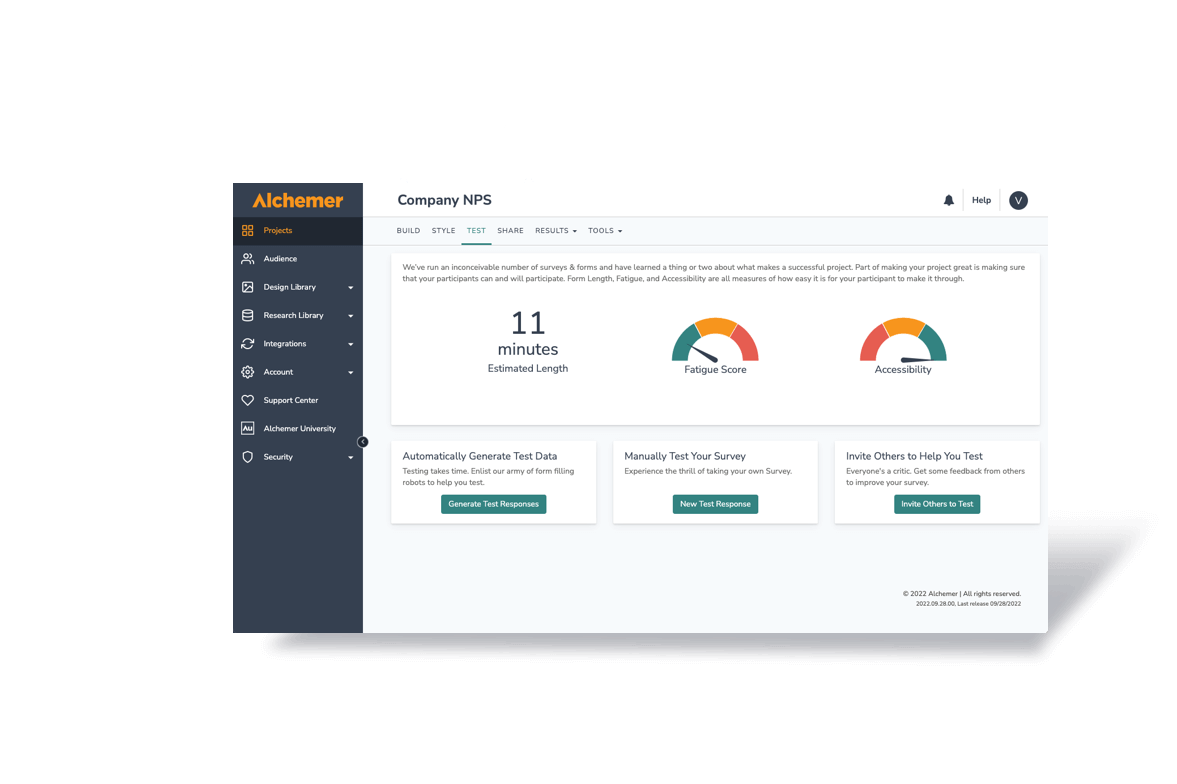This blog references our new e-guide, titled “The Complete Guide to CX Transformation”. You can download the free, comprehensive e-guide, here.
At Alchemer, we’ve established that NPS surveys don’t tell the full story. Surveys, combined with open text analysis, however, hold immense potential for uncovering deeper customer insights from customer feedback.
In this post we explore how to effectively incorporate open text analysis into your CX survey strategy to unlock those deeper customer insights.
Step 1: Let your customers lead the conversation
To truly understand your customers, give them the freedom to express themselves. Open-ended questions are the key and allow respondents to share their thoughts, feelings, and experiences in their own words.
Use these questions liberally to uncover richer insights. Limit close-ended, multiple-choice questions to situations where clarity or specific data is required.
By focusing on open-ended responses, you reduce survey design time and open opportunities to gather deeper insights without leading or biasing the customer. Let them tell you what they think, instead of guessing or pushing them toward predefined answers.
Step 2: Learn how open text analysis benefits your team
Open text analysis is an invaluable tool for different teams, each benefiting in unique ways:
CX Teams
Text analysis allows CX teams to dig deeper into issues that impact customer satisfaction, retention, and ultimately revenue. With it, they can answer questions like:
- What’s causing my NPS scores to drop?
- Why are we seeing increased churn this quarter?
- How can I demonstrate that CX efforts are driving business results?
- What is the impact of negative feedback on customer lifetime value (LTV)?
Product Teams
For product teams, open text analysis helps shape a customer-focused product roadmap that not only addresses user concerns but also improves engagement and drives revenue. It can help answer questions such as:
- Which product features should we prioritize?
- How do we spot emerging product issues faster?
- How can we improve the user experience?
Support Teams
Support teams use text analysis on feedback from call transcripts and support surveys to uncover operational inefficiencies and common customer complaints, helping them resolve customer issues faster and boost loyalty. Key questions they might explore include:
- What are the root causes of customer complaints?
- How can we resolve issues more efficiently?
- Where does the support team need improvement?
Marketing Teams
For Marketing, open text analysis reveals how customers perceive your brand, product, and services. It also identifies pain points and critical factors that influence purchasing decisions. It empowers Marketing to answer questions such as:
- What do customers genuinely like about our product or service?
- What’s resonating with our brand, and where should we double down on our efforts?
- Where are customers struggling, and how can we improve our messaging and outreach?
- Why are we losing customers to competitors?
- How have customer preferences shifted?
Step 3: Embrace omni-channel feedback
Surveys are a great starting point and likely where you’ll gather most of your open-text feedback, but they are only the beginning. Expand and integrate your feedback gathering channels across every point of the customer journey – surveys, social media, websites, call centers, chatbots, and support to create a single source of truth. Bring all this feedback into your open text analysis tool to get a full picture of how your customers are feeling.
Step 4: Choose the right open text analysis tool
The rise of AI has flooded the market with countless tech tools, but not all open text analysis solutions are created equal. When selecting a tool, choose one that is tailored for CX use and offers the following:
- Scalability: Can it handle large volumes of data?
- Accuracy: Does it deliver reliable insights?
- Timeliness: Can it process and provide insights quickly enough to take action?
- Depth: Does it provide nuanced insights that go beyond surface-level sentiment analysis?
- Accessibility: Is the tool user-friendly and accessible across your organization?
Look for a solution that aligns with these criteria to ensure you can turn customer feedback into meaningful, actionable strategies.
Step 5: Use incites to drive action
The power of open text analysis lies in its ability to provide actionable, real-time insights that allow CX teams to make informed decisions. Rather than speculating about how customers feel, you can hear directly from them in their own words. Use these insights to fine-tune your customer experience initiatives, creating targeted strategies that address feedback and continuously improve customer satisfaction. By acting on these insights, you not only solve immediate problems but also strengthen your long-term customer relationships.
By implementing these five steps, you’ll be well on your way to developing an AI-powered, data-driven CX feedback strategy that truly resonates with your customers and drives business growth.
Continue Reading
Want to continue reading? Download The Complete Guide to CX Transformation and discover the three key areas that will elevate your customer experience strategy:
- Design and scale a CX program that aligns your entire organization around the customer’s changing needs
- Leverage open-text feedback to uncover powerful customer insights in real time
- Prove the value of your CX Initiatives




